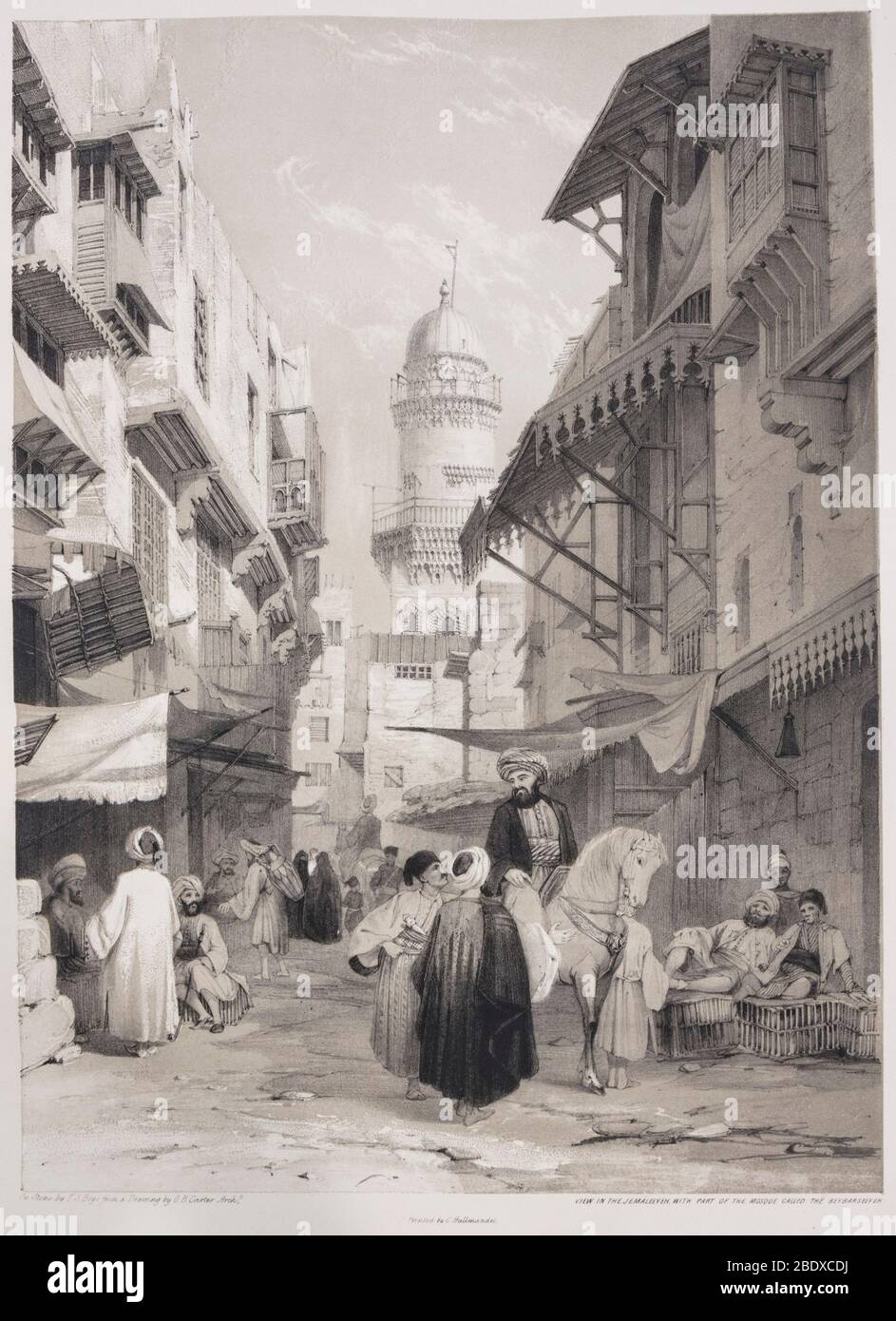View in the Jemaleeyeh, With part of the mosque Beybarseeyeh, Robert Hay, Illustrations of Cairo, London, 1840

Image details
Contributor:
B.O'Kane / Alamy Stock PhotoImage ID:
2BDXCDJFile size:
47.7 MB (2.7 MB Compressed download)Releases:
Model - no | Property - noDo I need a release?Dimensions:
3479 x 4795 px | 29.5 x 40.6 cm | 11.6 x 16 inches | 300dpiDate taken:
30 January 2020Location:
Cairo, EgyptMore information:
This image is a public domain image, which means either that copyright has expired in the image or the copyright holder has waived their copyright. Alamy charges you a fee for access to the high resolution copy of the image.
This image could have imperfections as it’s either historical or reportage.
Robert Hay (1799-1863) was a Scottish explorer, antiquarian, and early Egyptologist. Born at Duns Castle in Berwickshire into a well-established Scottish family, he joined the Royal Navy at the age of 13, thus following a family tradition of service in the armed forces. Navy service brought him to Alexandria in 1818 and this visit, coupled with reading Belzoni's works, inspired him to return to Egypt and travel. For almost ten years beginning in 1824, Hay explored Egypt, recording the ancient temples and tombs along the Nile, not merely by making sketches and brief descriptions, as earlier travelers had done, but thoroughly, with architectural plans and detailed copies of the murals and inscriptions. Robert Hay was typical of the new generation of antiquarians, and he was wealthy enough to employ a number of artists, who were greatly assisted in their by the use of the camera lucida, a portable device with prisms that enables exact drawings to be made of scenes and objects. Other artists who worked with or for Hay included Joseph Bonomi, who had trained as a sculptor, and Francis Arundale, who had studied architecture, and also painting under Pugin. Hay died in East Lothian, Scotland, in 1863. His collection of artifacts and plaster casts was purchased by the British Museum, except for some objects which were sold to a Boston banker and form part of the collection of the Museum of Fine Arts in Boston. The vast corpus of his drawings, paintings, plans, notebooks and diaries is kept in the British Library and it is often consulted by Egyptologists wishing to see tombs, temples and wall paintings in a less deteriorated and damaged state, as they were in the 1820's. Astonishingly however, aside from this book - "Illustrations of Cairo", published in 1840– none of Hay's work ever saw the light of day.